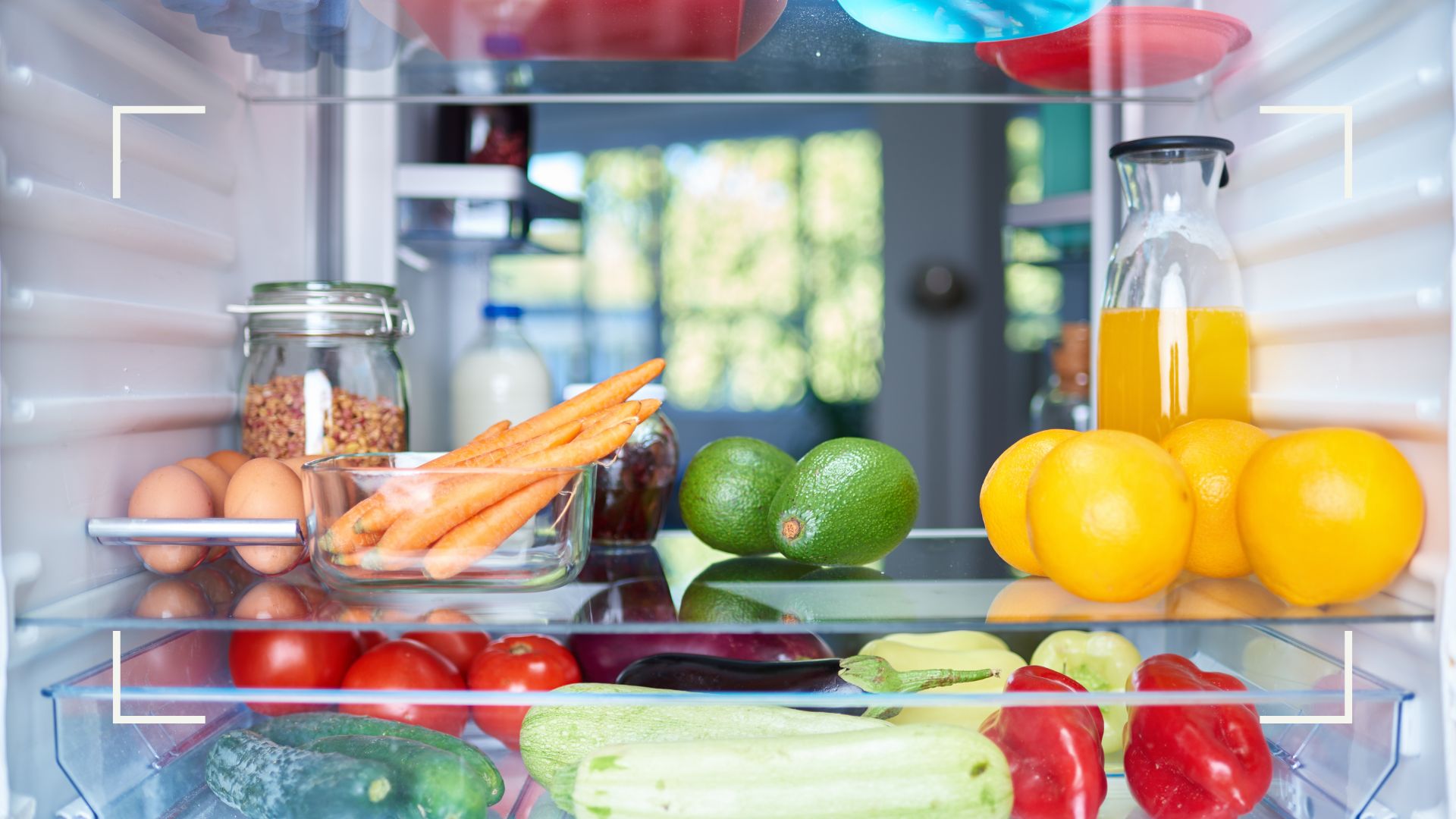
Knowing how to organize a fridge is simple, but finding a system that you can stick to is where many of us fall foul.
Picture the contents of your fridge. Do you keep your milk in the fridge door? Where are your cooked foods located? The way you organize the fridge and where you store your food could have a considerable impact on how long your food stays fresh. More importantly, organizing your fridge properly will lead to less food waste.
Similar to knowing how to organize a kitchen or nailing how to organize kitchen cabinets, much of it boils down to getting rid of things you don't need and ensuring everything has a place. It's often the small daily habits that help keep our homes clean and tidy – which is true of maintaining an organized fridge.
We spoke to refrigeration and organization experts who explained how to get started, and where everything should go.
How to organize your fridge - a quick guide
Arguably, the most important part of organizing your fridge is re-stocking it the correct way. But before you get around to that, you have to reset its contents. Peter Jackson, member of APDO (The Association of Professional Declutterers and Organisers), and owner of Calm the Clutter explains his 'stages' of decluttering your fridge:
1. Take everything out
Whether you want to know how to organize a pantry or your kitchen cabinets, taking everything out and getting rid of old produce is nearly always the first step. This is no different when you're organizing your fridge.
"First, take everything out of your fridge," says Peter. "A clear countertop is best for this. Throw out anything that’s past its ‘use by’ date, or that’s past its eat by state, or that you’ll never eat and can’t give away. You can reduce the crush in the fridge by removing all the things that shouldn’t be stored inside there at all." Many long-life condiments will state on the label that they don't need to be refrigerated.
Sign up to our free daily email for the latest royal and entertainment news, interesting opinion, expert advice on styling and beauty trends, and no-nonsense guides to the health and wellness questions you want answered.
"Other items to keep out of the fridge include root vegetables, berries, stone and citrus fruits, bananas and avocados," adds Cesar Fernandez, Home Economist at Miele GB. "Instead, keep them in a brown paper bag in a cool, dark place."
2. Sort everything into categories
"Next, sort things into categories. Once we’ve got rid of things that shouldn’t go back in the fridge – whether because they don’t belong there in the first place or they’ve gone off among the clutter, we need to sort what remains into categories. Just sort into groups – by food type and perhaps size." advises Peter. Once you've organized your items by type, re-stocking will be all the easier - more on that below.
3. Adjust your shelves
"To make the best use of the space you have you’ll almost certainly need to adjust your shelves," advises Peter. "Things crushed together, hard to find, or big gaps at the top of each shelf area all indicate a lack of efficient container use or poor shelf location.
"Ensure shelves and boxes are no more than two-thirds full to enable the cool air to flow – this improves storage life as the refrigerated air moves around freely, and it stops delicate items from being crushed."
To adjust your shelves, simply slide them out and add them back in at the height you want. This will vary from appliance to appliance so check your manufacturer's instructions if in doubt. To maximize your shelf space, consider investing in some storage solutions - for example, egg racks or clear containers to store particular types of food.
4. Clean your fridge
Before restocking your fridge again, take this opportunity to thoroughly clean it with hot soapy water to get rid of any nasty food residue. Check out our guide on how to clean a fridge for a full, step-by-step guide.
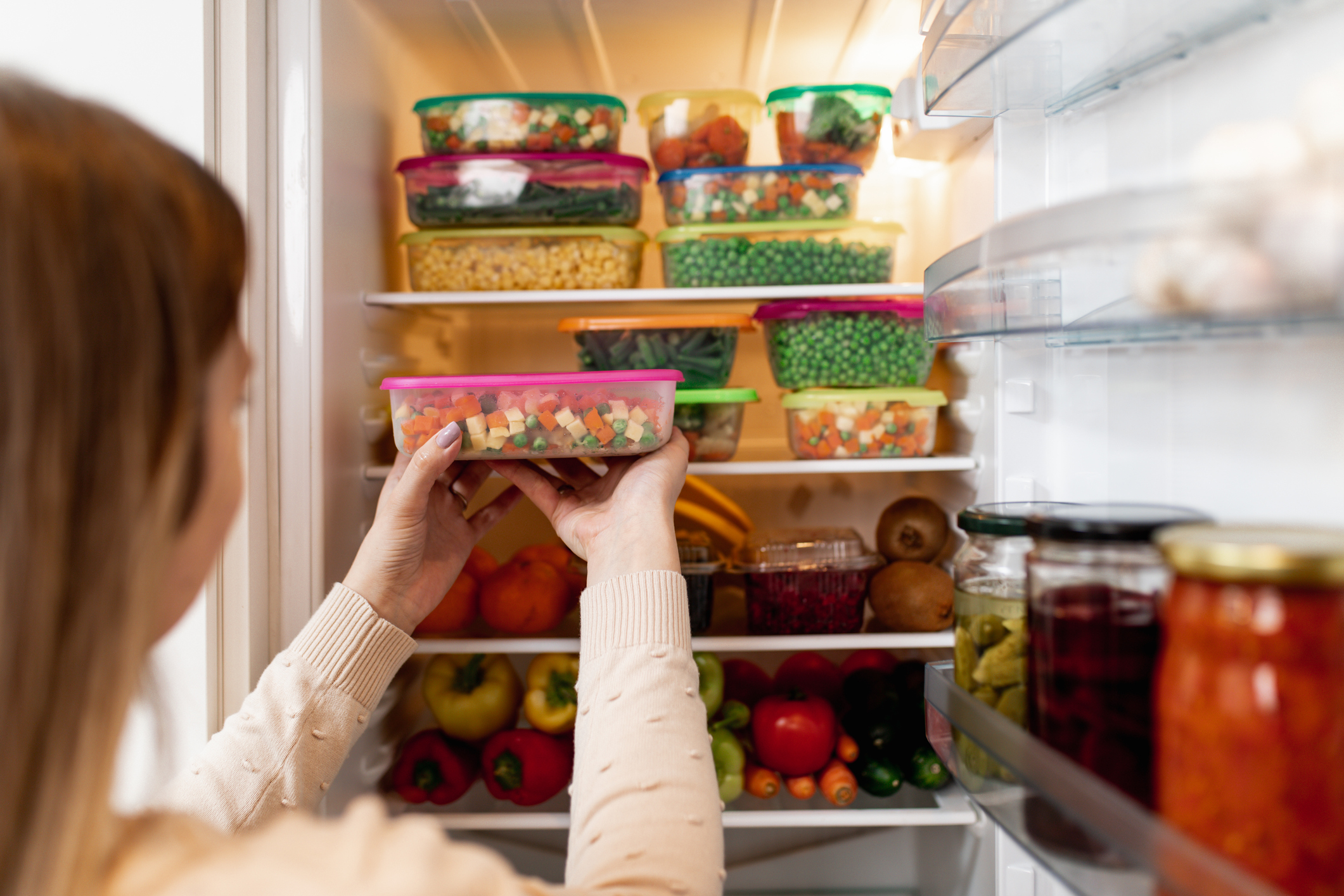
5. Restock your fridge
Now that you have a blank canvas, with your shelves adjusted and any necessary kitchen storage added, it's time to restock your fridge. This is where your organizational skills come in.
"It’s tempting to get home from a big shop and just cram everything into the fridge. Sometimes that’s a chore in itself, making sure everything fits and is easy to access. But there’s more to re-stocking your refrigerator than you may think. Having a well-organized fridge will not only make everything easier to find but also keeps it fresher, reduces waste, and saves money," says Cesar.
"Everything needs a place," agrees Peter. "Organize foods with the oldest to the front of each section – that way you waste less food." Keep earlier ‘use by’ and ‘best before’ dates at the front of the fridge.
Also consider how you use your fridge, and put items at the front that you may need quick access to.
"Create an easily accessible refuel and snack zone for children on the bottom shelf. Keep it stocked with sugar-free drinks and grab-and-go snacks such as yogurts and carrot sticks for a healthy lifestyle," advises Cesar.
Avoid over-stocking your fridge or keeping the door open for a sustained period of time - even when you're organizing it.
"The more the door is opened and the longer it’s kept open, the warmer the temperature," adds Cesar. "Also true if the fridge is crammed with too much food. So resist opening it more than is needed and keep a good airflow inside by reducing the amount of food."
6. Maintain order each time you restock
The work doesn't stop once you've organized your fridge, it's an ongoing job to consider with every food shop. Getting into good daily habits will ensure your fridge stays organized for longer.
"Follow the rule of first in, first out," advises TV cook Fiona Uyema. "This simple rule means to use up what you’ve bought before you buy more or use fresher ingredients. It’s too easy to shove older foods to the back of the fridge when adding new groceries."
"A simple hack is to label a ‘use me first’ bin in your fridge. Put things that look less than fresh in this bin and make it your first port of call when making a meal. The trick here is flexible cooking; if a recipe calls for broccoli and you have green beans in your ‘use me first’ bin, then sub those in instead."
Now that you've categorized your produce, got rid of anything that doesn't need to be there, and identified your perishable items, it's important to ensure that everything is put back in the correct place. Here are the items that should be placed on your top, bottom, and middle shelves.
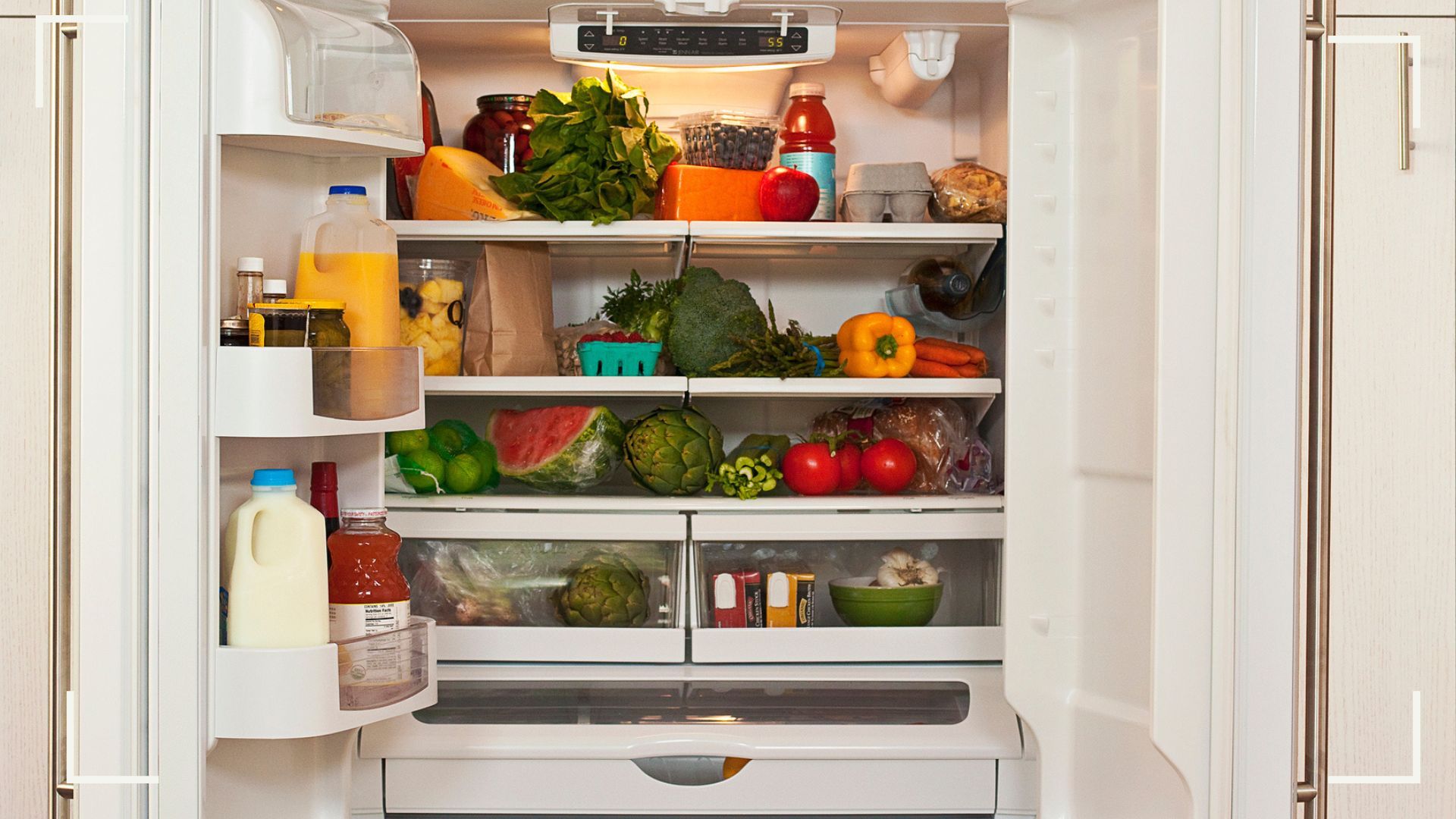
Where everything should be stored in your fridge
Different parts of your fridge operate at slightly different temperatures so there is a 'right' place for most items.
Use door shelves for natural preservatives
Contrary to popular belief, the door of the fridge is not the ideal place to keep milk. "As it’s the warmest part of the fridge, use the door balconies for items with natural preservatives such as jams, chutneys, soft cheese, and juice," explains Cesar.
Butter doesn't have to be kept in the fridge, but if you do prefer to keep it cool, then the fridge door is an ideal storage space, as it won't keep it overly cool.
Keep fresh vegetables in the bottom drawers
Vegetables should be stored in the drawers at the bottom of the fridge, which will keep them nice and cool and fresher for longer. Drawers are ideal for storing fresh veg and herbs because it keeps them away from the base and walls of the fridge, where they are at risk of freezing and going soft. The drawers will protect them from ambient odors in the fridge, and shield them from meat juices.
"Some items can be stored in different ways," adds Cesar. "Asparagus and spring onions for instance should be kept with their stems in water. Spring onions will even keep on growing! Another good tip is to line the drawers with some kitchen roll. It makes it easier to keep them clean and you can just replace them with new sheets every few weeks."
You may want to categorize your vegetables by type. "When you can control the humidity in dedicated drawers, divide items depending on how much humidity they need," Cesar adds. "Apples, pears, avocados and most fruits don’t need much as they will ripen too quickly and go off. Leafy greens and herbs on the other hand do need high humidity to stay fresh and crisp."
Tomatoes also lose their flavor in the refrigerator so keep them at room temperature. If you have a large supply, consider batch cooking slow roasted tomatoes or a tomato sauce. Cook, cool, and freeze.
Keep meat on the bottom shelf
"As it’s the coolest part of the fridge, this is where you need to keep raw food including meat and fish. Keep it wrapped or in its packaging to prevent any juices from dripping. This also reduces the risk of cross-contamination with other foods," explains Cesar.
Reserving the bottom shelf of the fridge just for raw meat prevents the juices from contaminating other food, and ensures it doesn't come into contact with other fresh produce. This can only be guaranteed on solid glass or plastic shelves, as slatted racks do not prevent leaks.
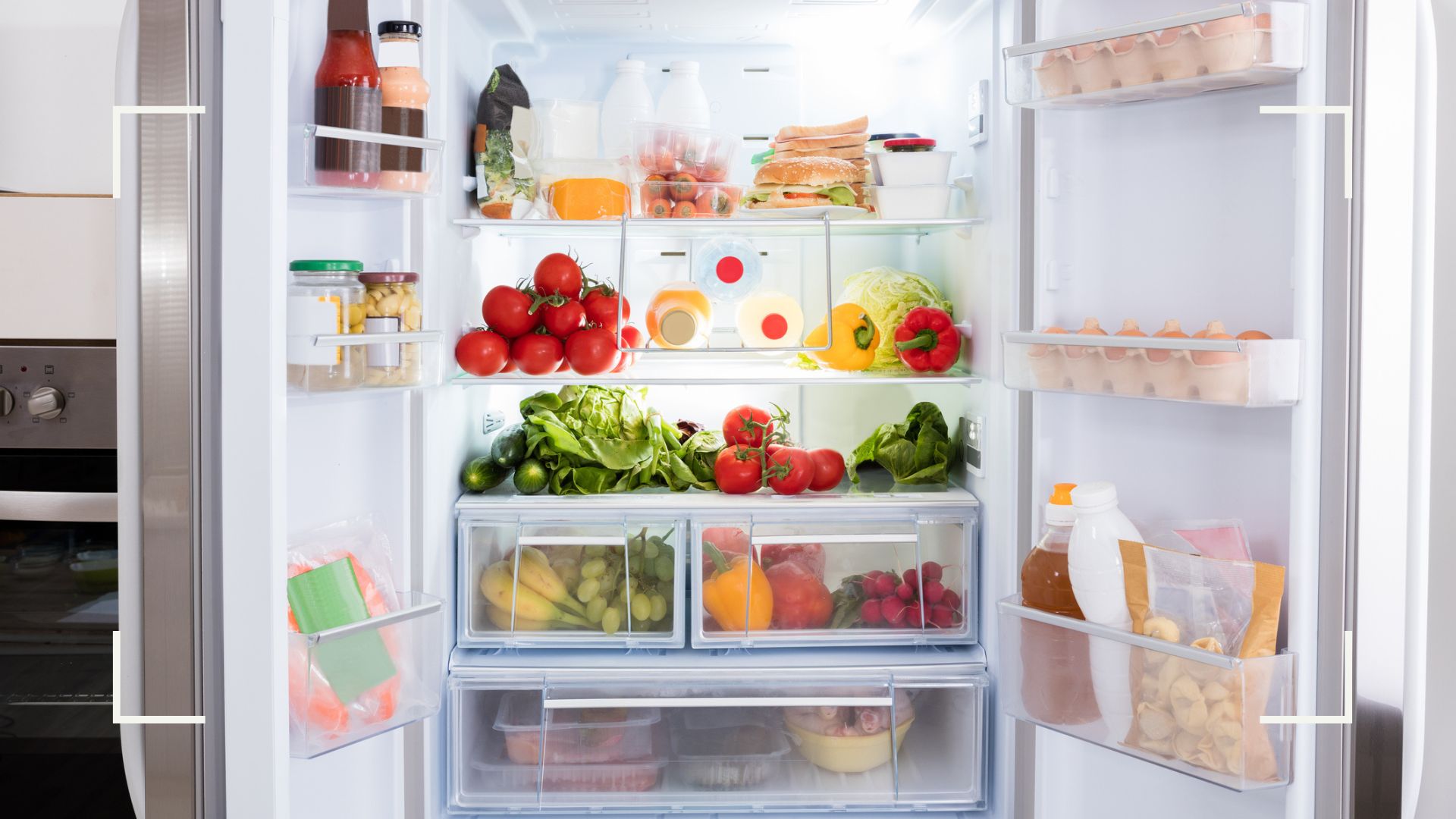
Keep dairy in the middle of the fridge
If you can keep your milk properly sealed, it is actually much better to store it in the middle of the fridge than the fridge door. Keeping milk, cheese, and yogurt in the middle of the fridge allows them to stay cool with good air circulation.
"Butter and soft cheeses don’t need to be in the coldest part of the fridge. The middle shelf is fine for dairy in general but softer cheeses are okay in the door," adds Peter.
Store cooked foods and meat in the upper shelf
The higher shelves are the best place for cooked foods, cured meats, and leftovers that don't need cooking - like cooked chicken leftovers. Keeping cooked food higher than raw food prevents contamination through spillages.
"Use the top half of the fridge for anything that doesn’t need cooking," says Cesar. "This includes everything from sliced cooked ham and turkey to yogurt, cheese and leftovers. Think deli items, snacks and prepared salad pots.
"Check the labels every now and then to make sure you move anything that should be eaten soon to the front. Keep longer ‘use by’ dates towards the back and rotate on a regular basis as you add new items. The reason these are top shelf is that they have a low risk of spoiling and the temperature tends to be a tad higher in the upper section. Another reason is that anything placed here at eye level will grab your attention more easily, hence why it’s good for snacks."
Keep wine on the lower shelves
Where to store wine, it's a tricky one – because the door is the most obvious choice but isn't it best kept on its side, or is that just Champagne? To help get a definitive answer we asked Danny John Casely, events and awards operations and procurement manager at wine specialist publication Decanter.
"The best way to store wine in a kitchen fridge is on its side," says Danny. This means that although handy, the door is not the best place to store wine. "The door area is not as cold as the back of the fridge," Danny explains so your wine won't be stored at an optimum temperature because it will fluctuate every time you open and close the fridge.
So wine is best stored on its side on a shelf, either middle or bottom: "if you need to chill a bottle quickly, this would help" says Danny.
Why those shelves? "Different parts of your fridge are at different temperatures, the coolest part of your fridge is the middle and bottom shelves," explains Tor Rydder, an organizing expert and the founder of Organizing.TV.
On that note, Danny adds, "You should always avoid storing wine for any length of time in a normal fridge, for long-term storage you would need to invest in a specialist wine fridge."
Do eggs need to be stored in the fridge?
Eggs do not need to be kept in the fridge and can remain just as fresh if kept in a bowl outside the fridge. What is most important is keeping the eggs at a constant temperature. If you want to keep them in the fridge - where they can last a little longer - keep them in the main body of the fridge where the temperature is constant. Do not store eggs in the fridge door, even if there is an egg rack, as the constant opening and closing of the door does not keep the temperature regular and can make eggs go off faster.
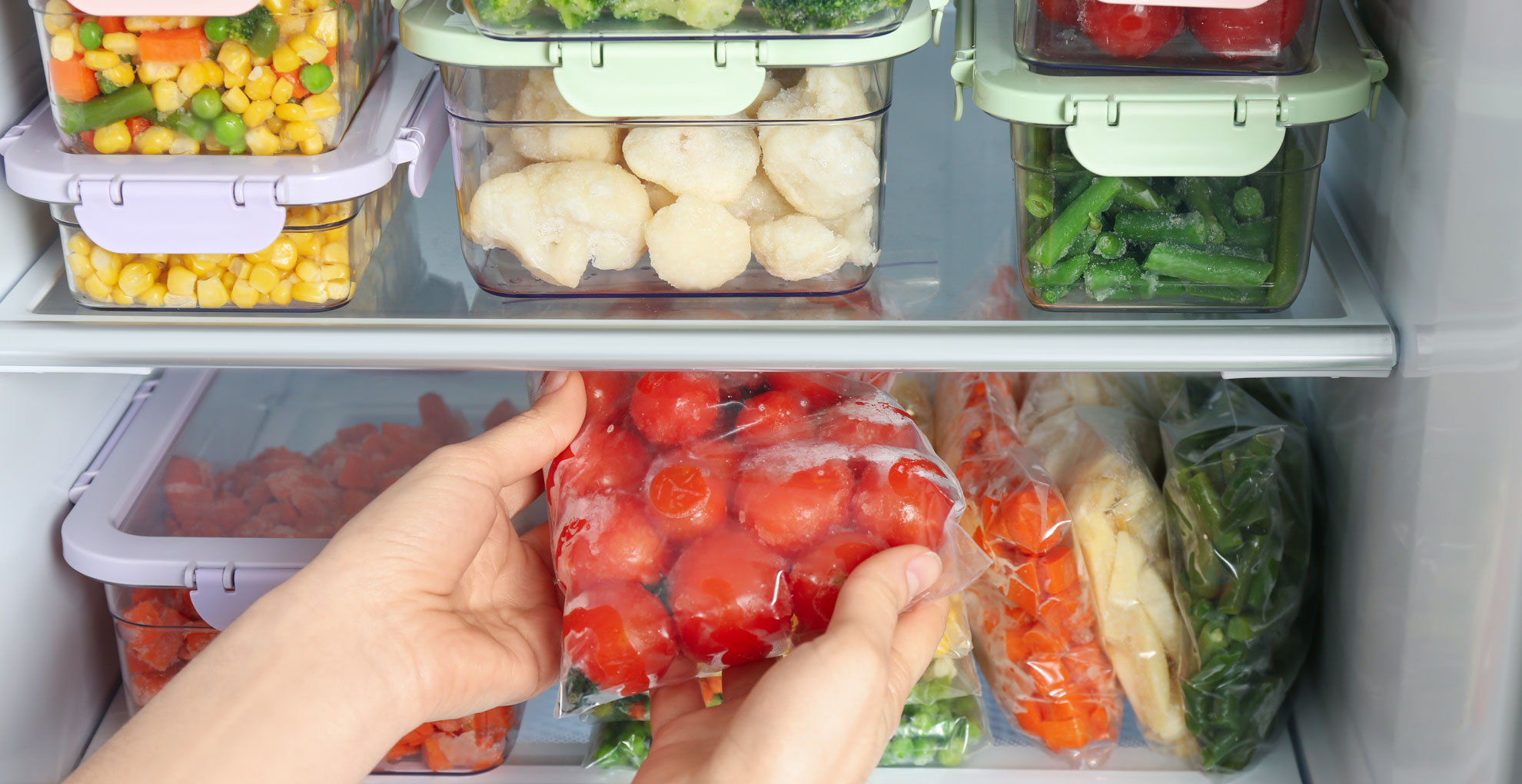
How do I maximize space in my fridge?
Storing everything in its place, as suggested above, is the best place to start when looking to maximize space in the fridge. It's also a good idea to stack accordingly, to ensure all items fit like a jigsaw puzzle – this may mean decanting items into practical containers that are easier to store than some packaging.
"Remove excess packaging," suggests Tor, "excess packaging takes up a lot of space when you’re trying to organize your fridge. Storing items without the packaging that they come in means you can store them closer together and maximize your space."
"If you can’t take the packaging away from the item without causing clutter, (smaller items, liquids, etc.) then I recommend investing in some clear, square containers. Square containers are the easiest to pack together, and they’ll make your fridge look uniform and organized."
It's also a good idea to seek problem-solving storage solutions, such as extendable racks that can provide the perfect place for bottles and cans – elevated above your food storage on the shelves below.
These storage components are not only great for maximizing space they are also ideal for maintaining order for items that have a tendency to roll around if not stored correctly.

Anna is an editor and journalist with over a decade of experience in digital content production, ranging from working in busy newsrooms and advertising agencies to fashion houses and luxury drinks brands. Now a freelance writer and editor, Anna covers everything lifestyle, from fashion and skincare to mental health and the best cocktails (and where to drink them).
Originally from Glasgow, Anna has lived in Berlin, Barcelona, and London, with stints in Guernsey and Athens. Her love of travel influences her work, whether she’s stocking up on the best skincare at French pharmacies, taking notes on local street style, or learning to cook regional cuisines. A certified cinephile, when she's not travelling the world, you'll find her hiding away from it at her local cinema.
- Tamara KellyLifestyle Editor
- Lauren Hughes
